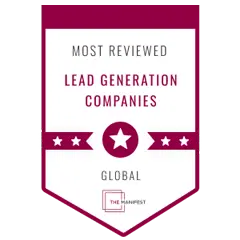Combining B2B marketing with FinTech services provides us with a field of marketing that is both challenging and labor-intensive. For example, when a company needs to buy 1,000 delivery vans, it will contact a vehicle manufacturing company that can deliver 1,000 vans within a stipulated time with the specifications. This is exactly where one company is selling its product/service to another company.
Now, the moment this product becomes a finance service, like say a debt relief plan or loan management program, the equations change. It now becomes almost impossible to sell a fully functioning business plan to potential buyers. Most companies require finances in order to be able to expand and start new projects, and most of them turn to banks and credit unions for loans. Of course, there is nothing wrong with that. However, the challenge for these companies lies elsewhere.
It’s apparent that the lack of communication platforms is becoming the biggest hindering factor. FinTech services have to abide by numerous marketing laws all while being able to sell their plans, schemes, and services.
Explore our Services: B2B Lead Generation for FinTech in Singapore and APAC
By now we all know that online adverts are not enough to educate your potential customers of a company’s services or products. The secret lies in building valuable relationships with your potential customers. There are no shortcuts to this success, but there sure are ways to expand and ensure your growth success.
Here are a few ways to make sure that your growth strategies are on point:
Consistency is key
All customers look for one thing: Consistency. In the eyes of your customers and potential clients, it is consistency in the quality of your service that will solidify reliability in their eyes. As with most business service and product buys, they’re often not impulsive buys. So, your approach cannot be the same when you’re selling to another business. It changes with each business you’re trying to sell to. In light of this, you always have to think about establishing trust and company value with your branding efforts.
Email marketing
This strategy enables you to keep yourself visible to all your target companies. Email marketing is a time-tested way to make sure that you can convey everything there is to know about your company’s policies and brand values to your clients.
Related: 7 Stats that Says Email Marketing is the BEST Among Other Channels [INFOGRAPHIC]
Multi-channel approach and content
Step one is finding out where your potential clients hang out online and the next step is establishing your online presence there. A good rule to follow with using a multi-channel approach is not to spam your potential customers. Your goal is for them to notice you, yes, but that is not the best way to do so. Tailor your content such as your videos and blog posts are all relevant to your brand and tailor to your audience’s needs, educating them, and offering plausible solutions to their pain points.
Relationship building
This is always the trickiest part because, for B2B companies, a lot is at stake here. Being able to build relationships warrants more regarding business investment and innovation. Not only do you want to gain new leads, but you also want them to stay. Therefore, it’s important that you keep on nurturing your customers even after they’ve converted into sales. This ensures the growth of your customer base and your reputation as a business.
Related: Five Lead Generation Strategies for Fintech Companies in APAC
SEO
The key to B2B success is, as we’ve already stressed enough, human communication. However, you also need to optimize your website in order to rank on SERPs. Having an SEO-friendly website equals higher CTRs, high dwell time, and increased ROI. FinTech is not excluded from this.
Related: Increase your Google Search Rankings: 5 Expert SEO Tips
Conclusion
Your target groups play the most crucial role in your marketing success, and you can’t approach a growth strategy without understanding your market first and foremost. With this list, we hope that we were able to help you set you on the right track for your business growth.













